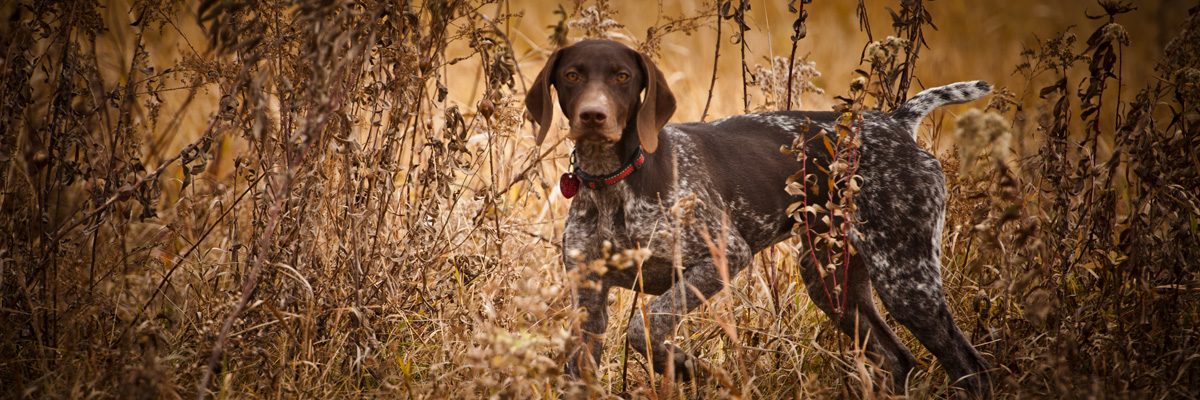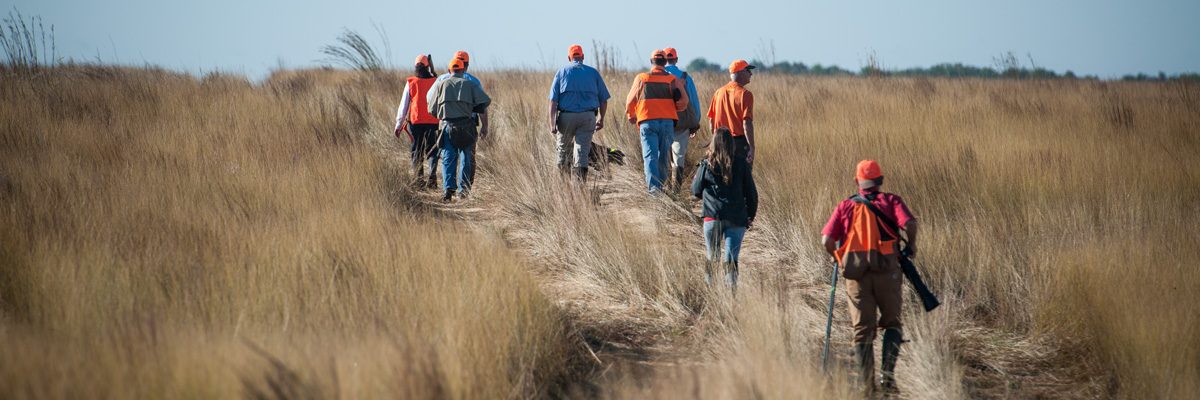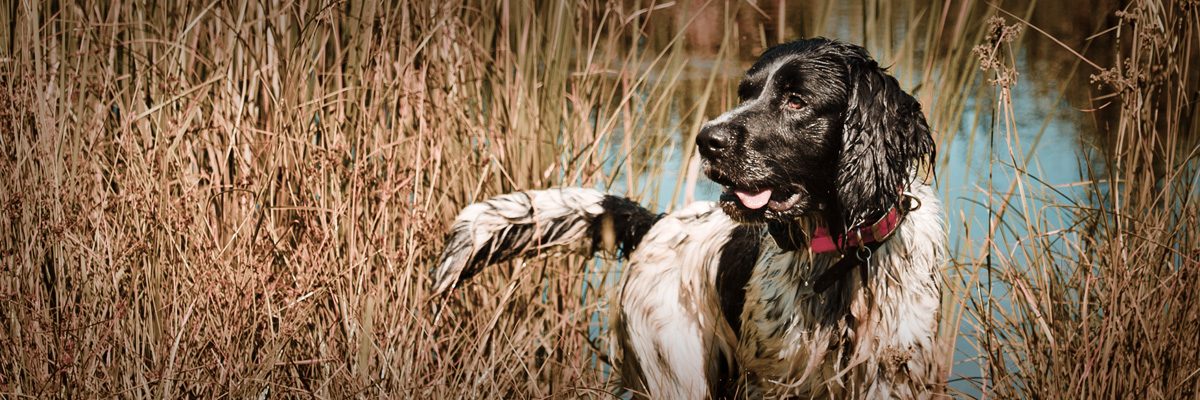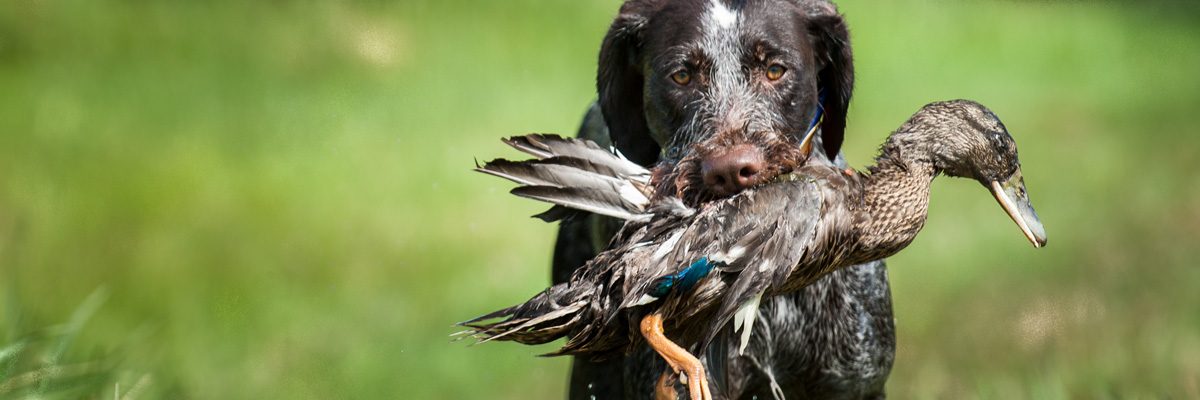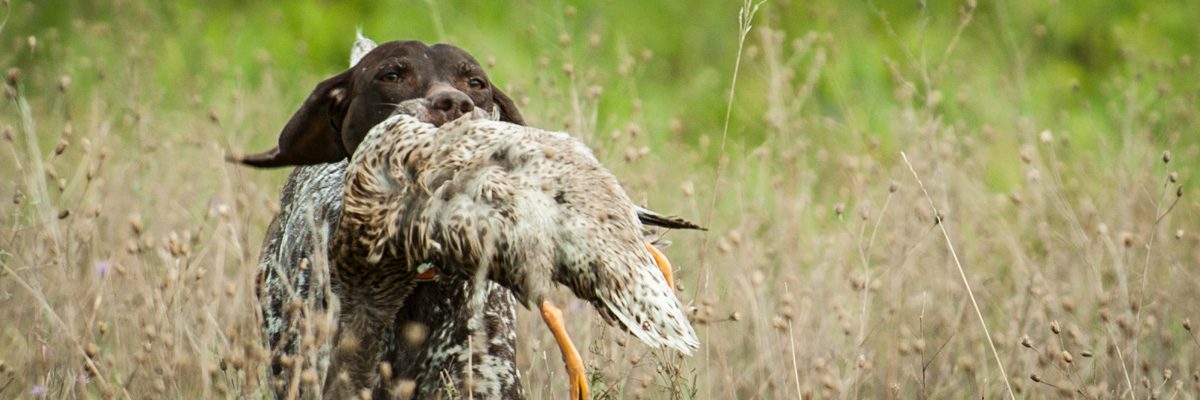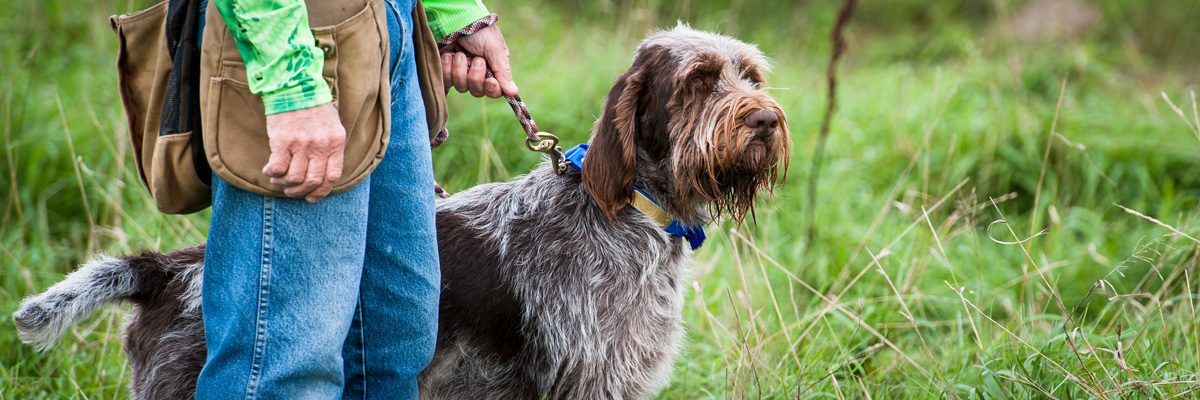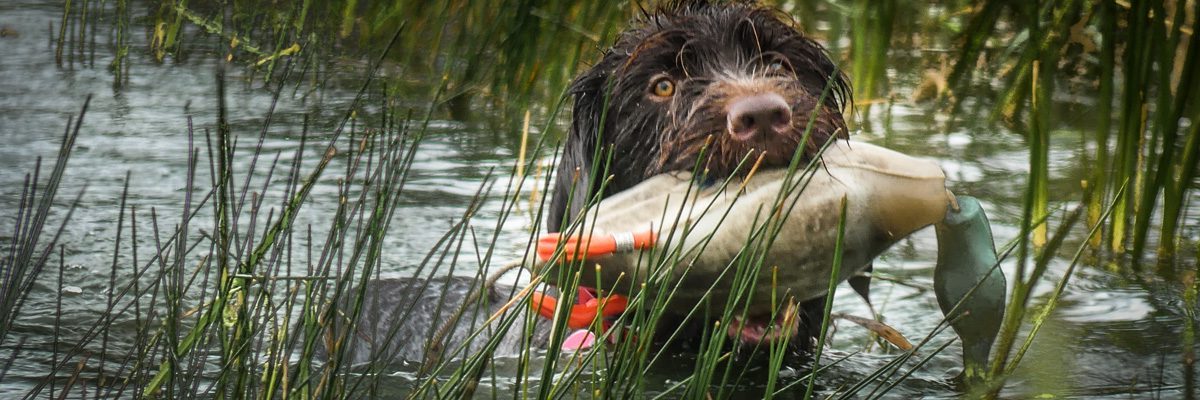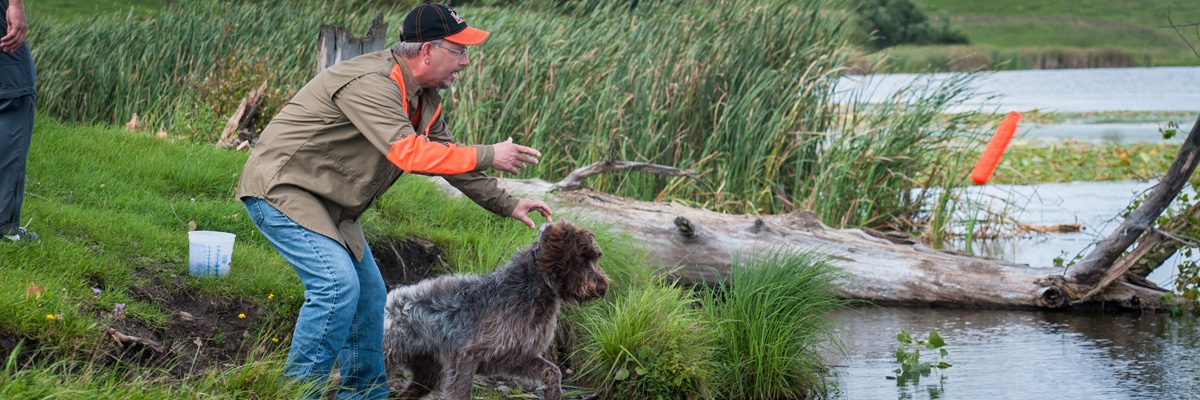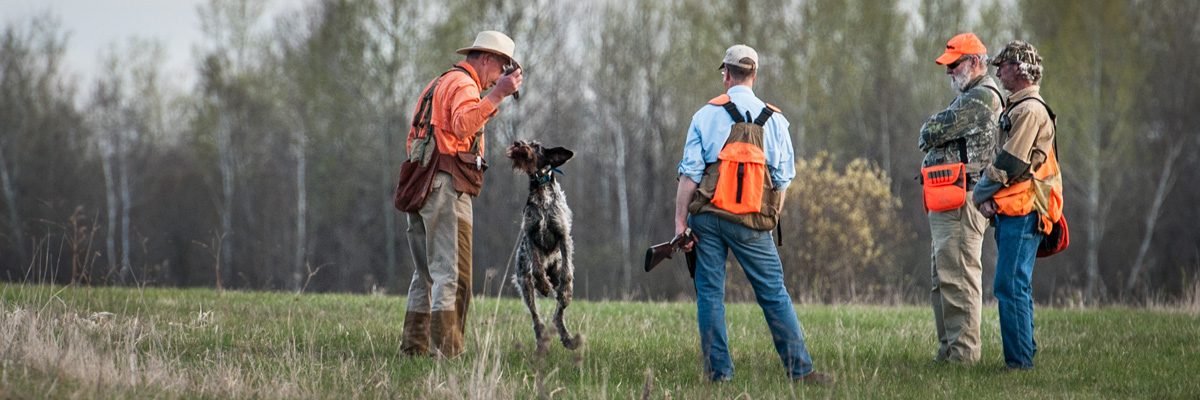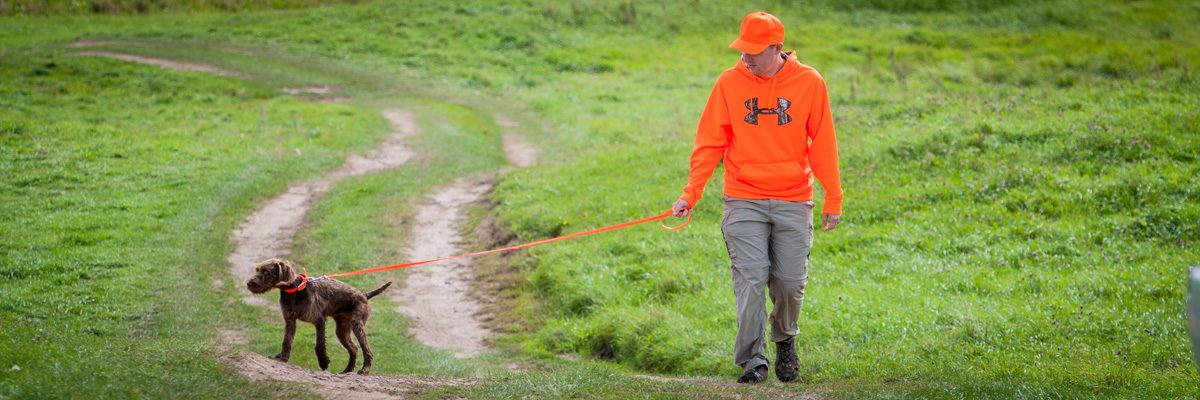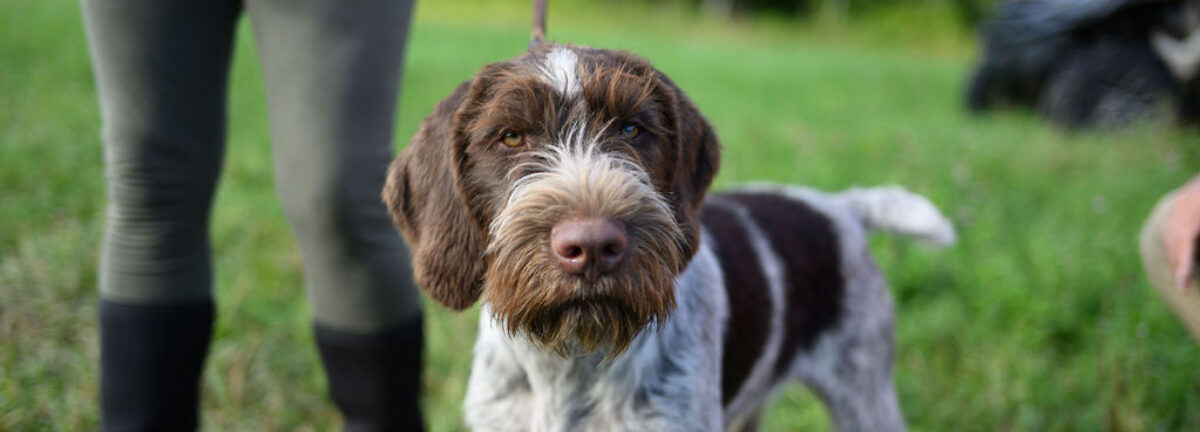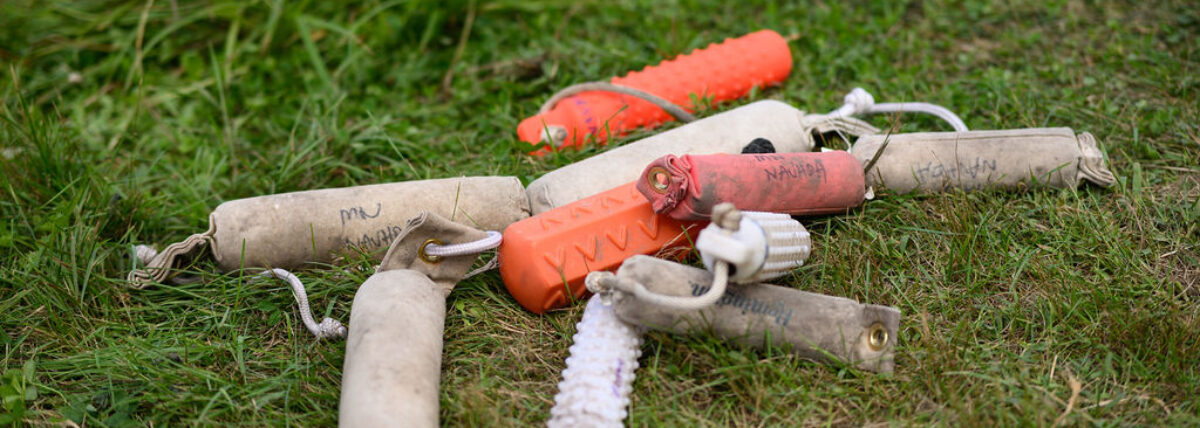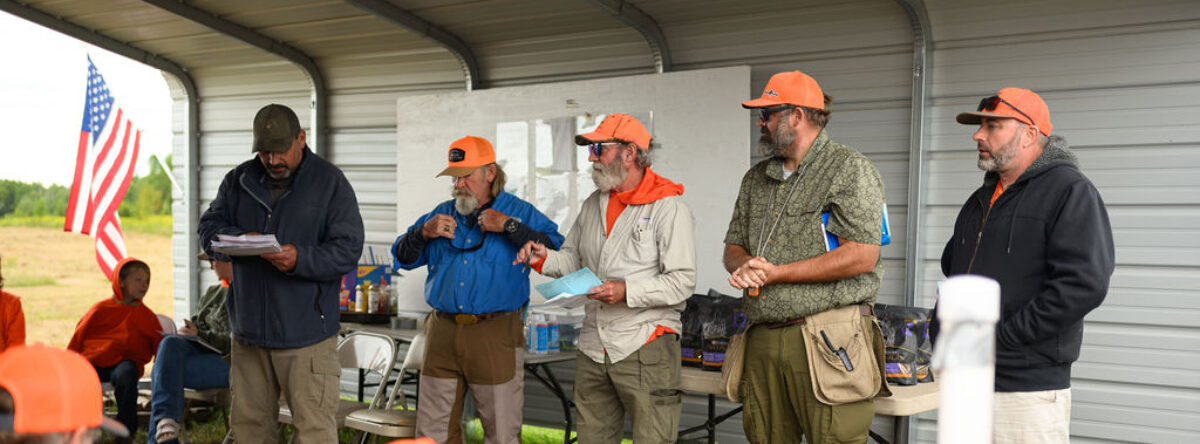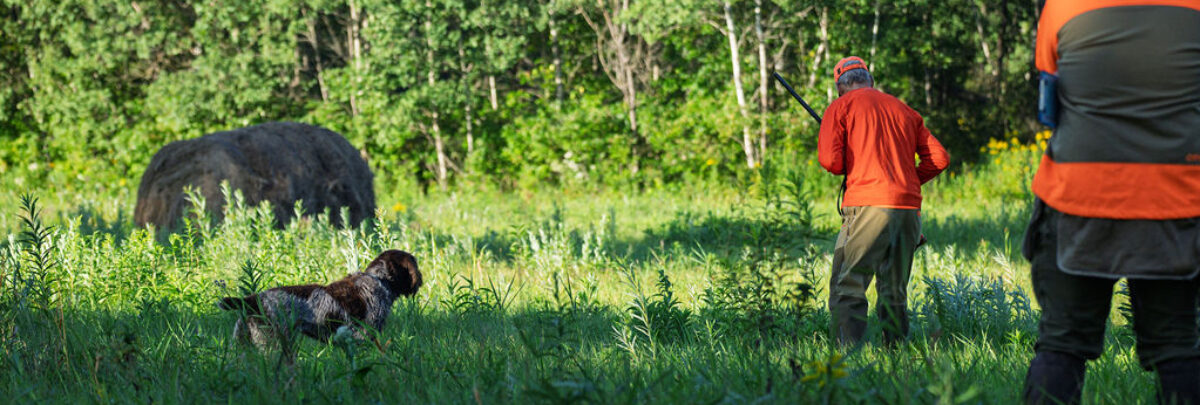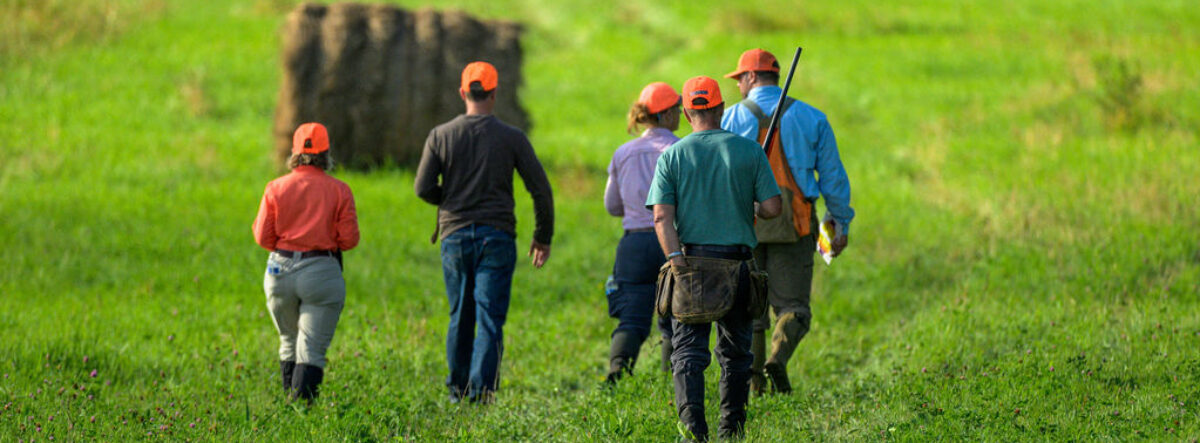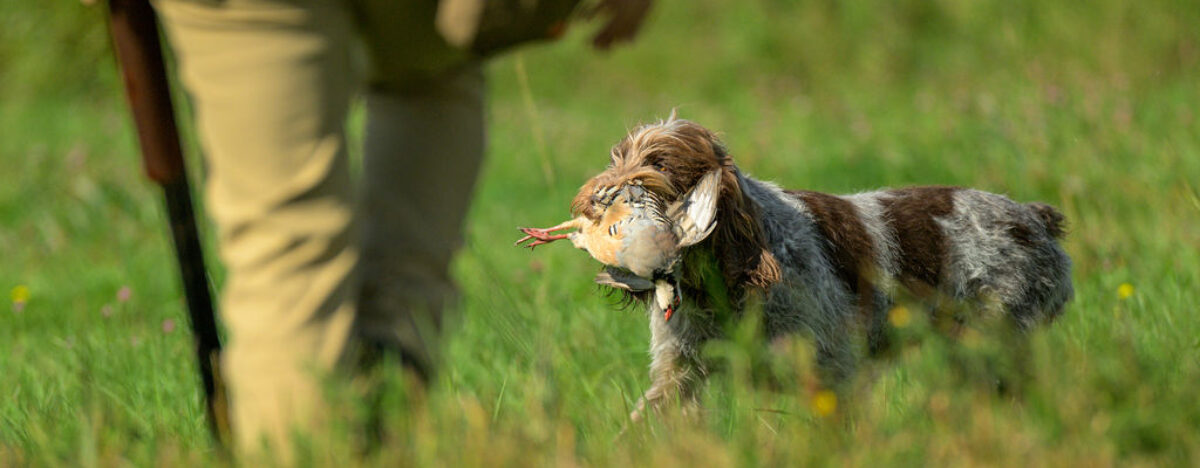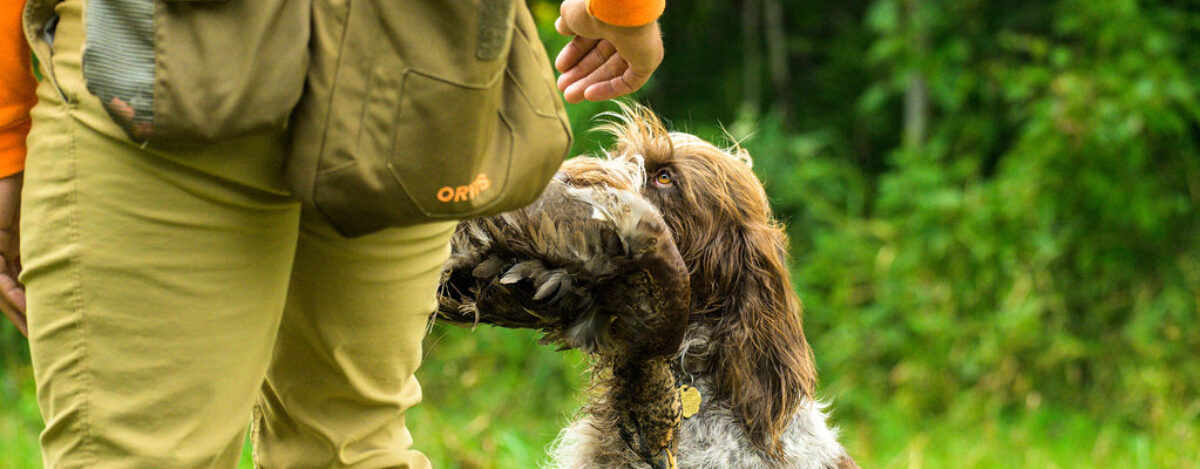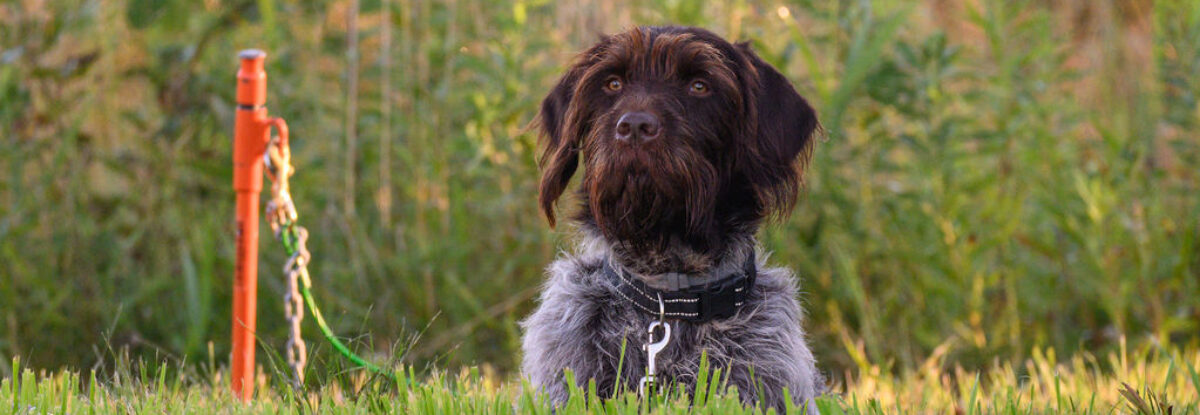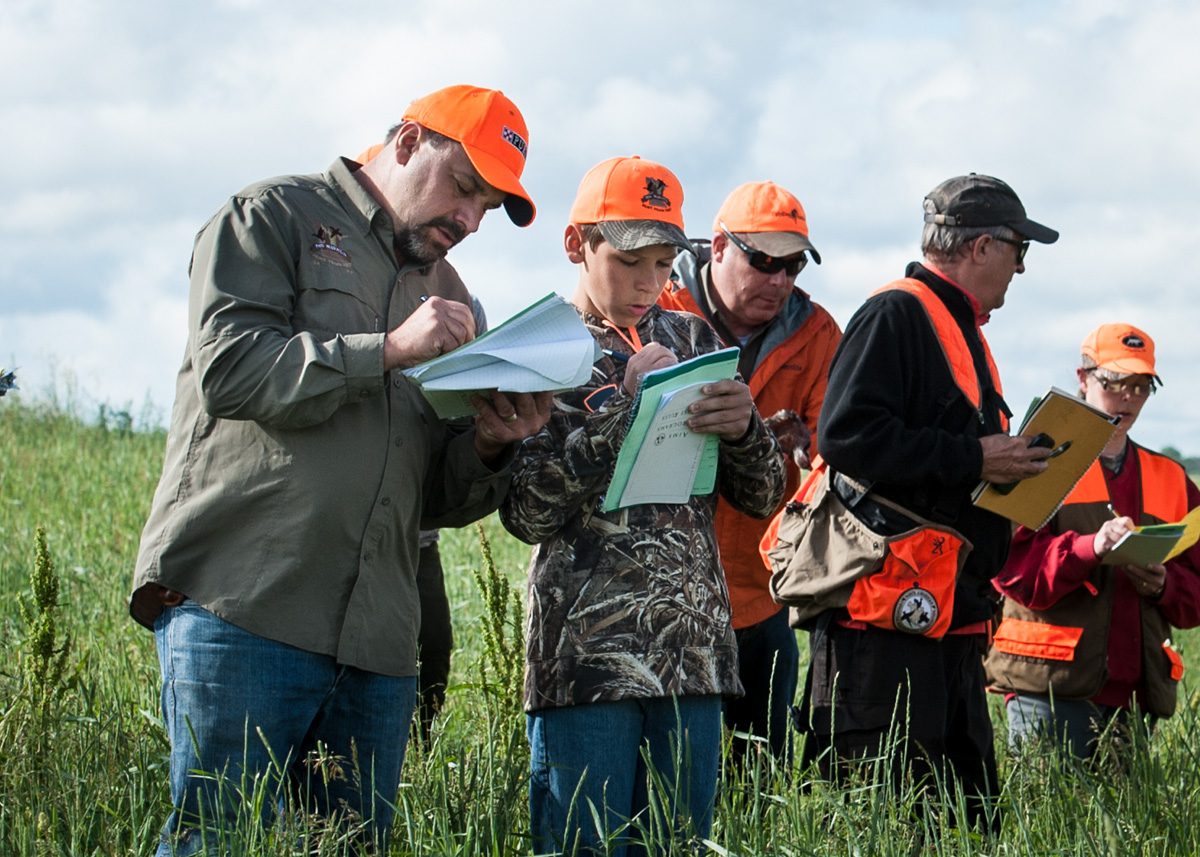By Ethan Aplikowski, age 14
I was able to do the Handler’s Clinic b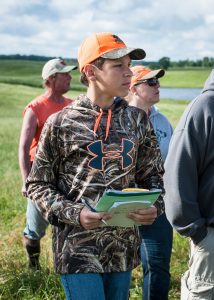 ecause of the Kristen Rieser Youth Scholarship Fund, which paid for my Handler’s Clinic entry fee. Also, youth handlers can get 75% of their test entry fee for a NAVHDA test refunded through the NAVHDA International youth program.
ecause of the Kristen Rieser Youth Scholarship Fund, which paid for my Handler’s Clinic entry fee. Also, youth handlers can get 75% of their test entry fee for a NAVHDA test refunded through the NAVHDA International youth program.
The journey I have been through so far with my 2 year old Griffon (RJ) in NAVHDA, has been a Mock NA test, then following the mock test up with a score of 112 and a Prize 1 in the NA test. I am planning on running with RJ in the Utility Preparatory Test (UPT) on Labor Day weekend and I thought the Handler’s Clinic would help me understand what the judges are looking at in the UPT test.
One thing that I have learned from the Handler’s clinic is the 4 stages of steadiness. Steady to flush, steady to wing, steady to shot, and steady to fall. In the UPT test you are only judged on the first 2 of the four stages, steady to flush and steady to wing. In the Utility Test (UT) you are judged on all 4 stages of steadiness.
I also learned how judges use their score cards for dog tests and how they keep it organized and what notes they take and how scoring works. All NAVHDA tests use a scoring system from 4 (the highest) to a 0 (the lowest). The way to get a 4 is if your dog did at least 76% of the work required for that component of the test, and to get a 3, your dog has to do 51% to 75%, for a 2, its 26% to 50%, and 1 is 1% to 25%, and your dog can receive a zero if they did none of the work.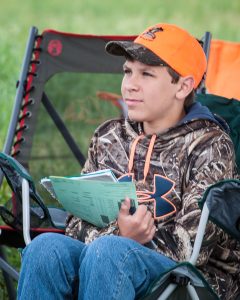
You may notice after the water part of a test, the judges will ask to straddle your dog. This is where they look at the physical attributes of your dog, the density and harshness of your dog’s coat, and to check if there are any defects, in your dog’s teeth and/or eyes. What they are looking for in your dog’s eyes is if the eyelids are entropic (turned in where the eyelashes are rubbing against the eye), ectropic (turned out where a pouch is created below the eye), or trichiasis (facial hair growing toward the eye). What judges look for in your dog’s teeth is to see if any teeth are misaligned, missing, or if they have extra teeth. The correct alignment is the scissors bite, where the top teeth or just barely in front of the bottom teeth. The abnormal alignments are the butt or pliers bite, the undershot bite, or the overshot bite. If you would like to see what the misalignments look like, you can look on page 36 and 37 of the NAVHDA AIMS book.
Your dog’s temperament is evaluated throughout the entire test. The judges are looking to see if your dog is sensitive, shuts down, or becomes aggressive after you give them a harsh correction. If your dog’s temperament is normal, then they do not shut down or get aggressive. If your dog’s temperament is sensitive, they will shut down or get aggressive, but they will recover quickly. If your dog’s temperament is shy, it takes them longer to recover from shutting down or becoming aggressive.
I am looking forward to the UPT test, and the remaining weeks of training. Wish RJ and me luck!
Editor’s note: Ethan and RJ ran a fine test, but due to the duck search scored 145 points and no prize, and had a great day nonetheless. He also prepared by participating in the Mock UT test in July.
